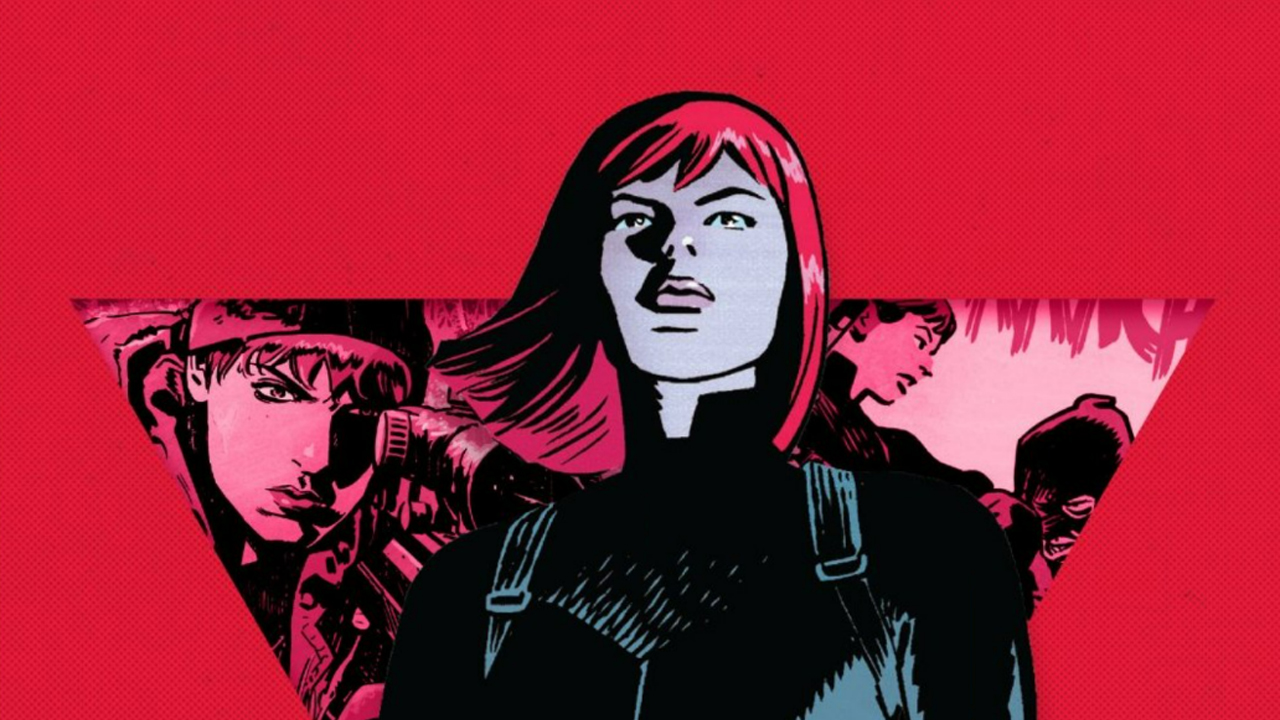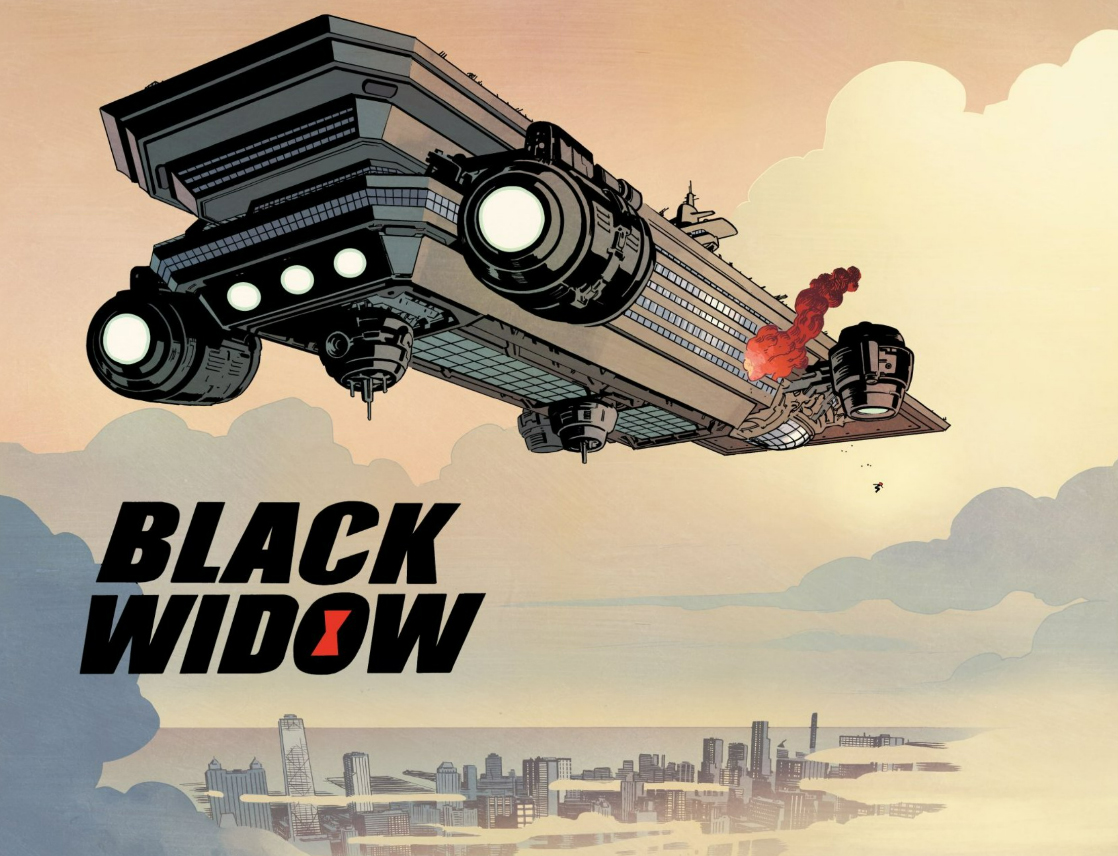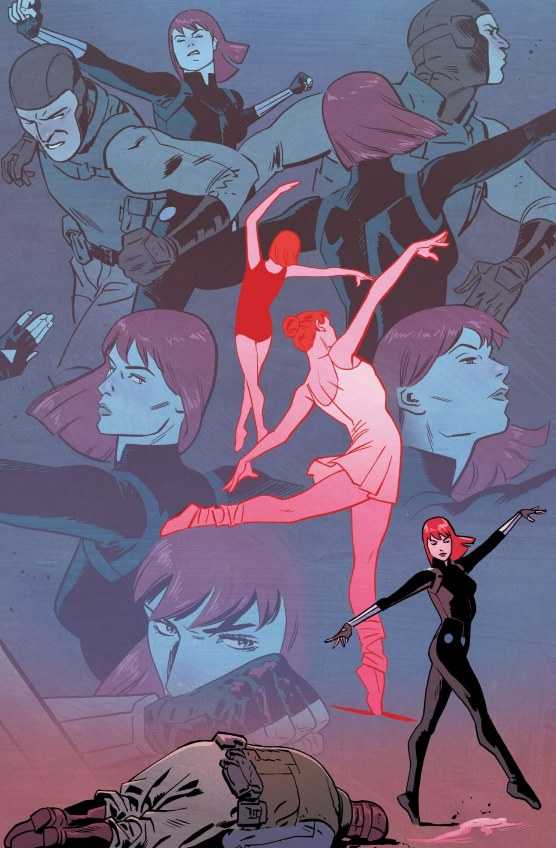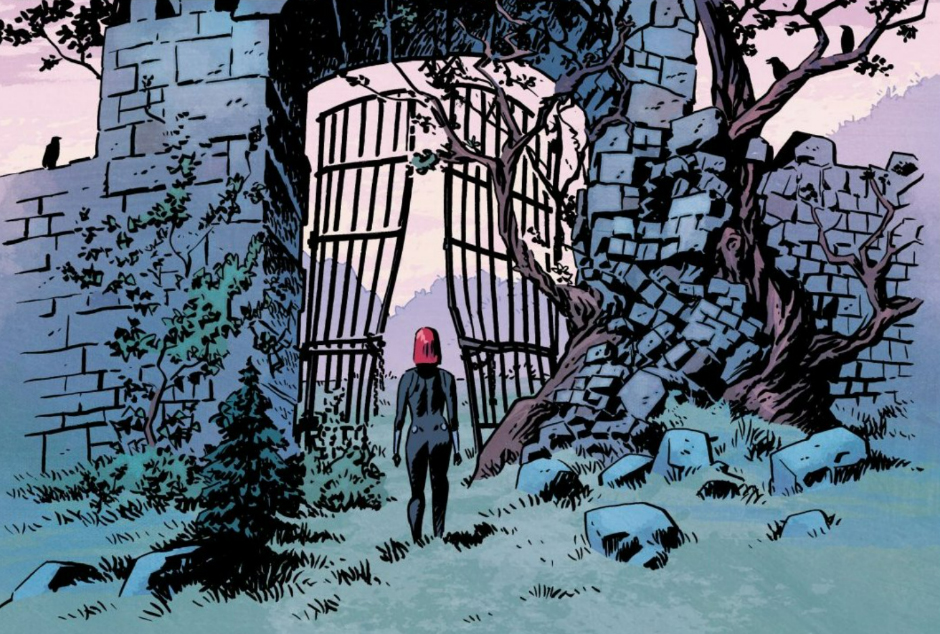Best Shots review: Black Widow by Chris Samnee & Mark Waid is a quintessential story for Nat
Samnee & Waid's Black WIdow is well executed and stylish beyond belief

As Mark Waid, Chris Samnee, Matthew Wilson, and Joe Caramagna were coming to the end of their celebrated Daredevil run, they knew they were eager to keep the collaboration going with another book. Only they didn't know which, or at least, didn't until Black Widow was suggested and Samnee started to get some ideas. He was looking to become more involved in crafting the narrative on a plotting level and the rest of the team were more than encouraging in letting him run with that desire.
Written by Mark Waid and Chris Samnee
Art by Chris Samnee and Matthew Wilson
Lettered by Joe Caramagna
Published by Marvel Comics
Review by Matthew Sibley
'Rama Rating: 8 out of 10
Funnily enough, the first of the team's 12 issues with the character kicks the proceedings off in a breathless fashion as the very first page establishes Natasha Romanov on the run herself. She's in desperate need of a way off of the SHIELD Helicarrier before one of the numerous other agents on board catch her. It is an assured, high-octane way to kick things off and Samnee knows how to keep things moving; especially when it comes to leading a reader's eye across a page.

His framing sticks close to Natasha as she weaves around and engages with her pursuers until the moment she hits the open air, where he then pulls back as far as he can with a double-page spread. The scale is emphasized within the craft itself and makes it that much more kinetic and thrilling. They've started taking you for a ride before you've even realized that you've joined them for it and even as the variables of the engagement shift, it is precisely paced so you don't get lost.
The reason for Nat's escape? She's stolen something of great worth from the organization. The following issues work to explain why. Suffice to say it's not as simple as her going rogue. Once again, she's found herself in a tangled web with parts of her past having caught up with her. With agents on her trail, a new foe in the Weeping Lion, and the threat of blackmail hanging over her head, it's going to take quite a bit of work for her to find her way out of this one.
In a way, it can be considered a quintessential story for Nat, even if that's due to this being one of the few narrative archetypes that she really gets to experience. This means that while this particular volume is well executed and stylish beyond belief, there is a ceiling in terms of how effective the overall project is. Unlike the team's work on Daredevil that brought the character out into the light after so many years of stories that took place within the street-level, noir-influenced milieu – even if they still grappled with Matt's recurrent traits such as depression and Catholic guilt – this, on the other hand, doesn't push its hero in quite as radical a direction. The biggest reason for this is a result of the direction that Samnee's plotting follows – Waid wrote the dialogue after the pages had been drawn – like tying in the Red Room, one of those aspects of her history that creators can't seem to leave there.

Though by that same token, the series excels in its best moments because Samnee plays with familiar beats, utilizing the built-in expectations to give himself and Wilson the space to dazzle. The second issue has a big set-piece set in a graveyard as Nat gracefully subdues a number of would-be assassins in order to prevent a funeral from being disturbed, much less ending in a greater loss of life. The heavy downpour of rain ensures an appropriately morose mood travels in the air. Samnee's blocking puts the most essential information front-and-center for the reader while Wilson makes use of reds that drive home the intensity of some choice moments of violence.

The nimble dexterity of their collaboration makes a wonderful fit for the character. Early on, a character notes that Nat "turns a 40,000-foot fall into a ballet." That statement characterizes their visual choices through the book well, even beyond a later splash page which renders the ballet metaphor as the textual point of the sequence. The series wouldn't quite work as a succession of silent issues, but Samnee's approach to visual storytelling ensuring clarity above all else means that the series' biggest, most action-packed moments come from a wider creative team that knows they don't need more than Caramagna's SFX accompanying the images for the readership to be clear on what they're seeing unfold.
Comic deals, prizes and latest news
Get the best comic news, insights, opinions, analysis and more!
They're also sure to keep things moving in terms of where the action takes place and in ways that bring in scene partners for Nat to play off of. Case in point: the sixth issue which brings Tony Stark into the fold while she's in Paris. Most of these inclusions work well and don't require extensive knowledge of what else was going on in the Marvel Universe at the time, which means that the book is largely new reader-friendly. In fact, the one that does require more context (and comes late into the narrative) ends up being the least additive to the story because it requires the creative team going such a long way to make a rather simple point, one that could've been more easily expressed within the confines of what they've already established by that point.

This detour aside, the other eleven issues are strong. Their leanness could be read as emptiness, but again, part of that is a result of how well Samnee can tell a story in such a stripped-down fashion. It's a lot like Steven Soderbergh's Haywire in that way, which saw the auteur tinker with familiar genre mechanics and streamline them as much as possible. Even if this creative team has proven themselves to be capable of more elsewhere, this is nevertheless a fine example of how entertaining they can make a story that to some extent you've already seen.
Like this? You'll love our list of the best Black Widow stories of all time.
Matt Sibley is a comics critic with Best Shots at Newsarama, who has contributed to the site for many years. Since 2016 in fact.


